Building a 1,000HP Turbo K Series Honda for the Street
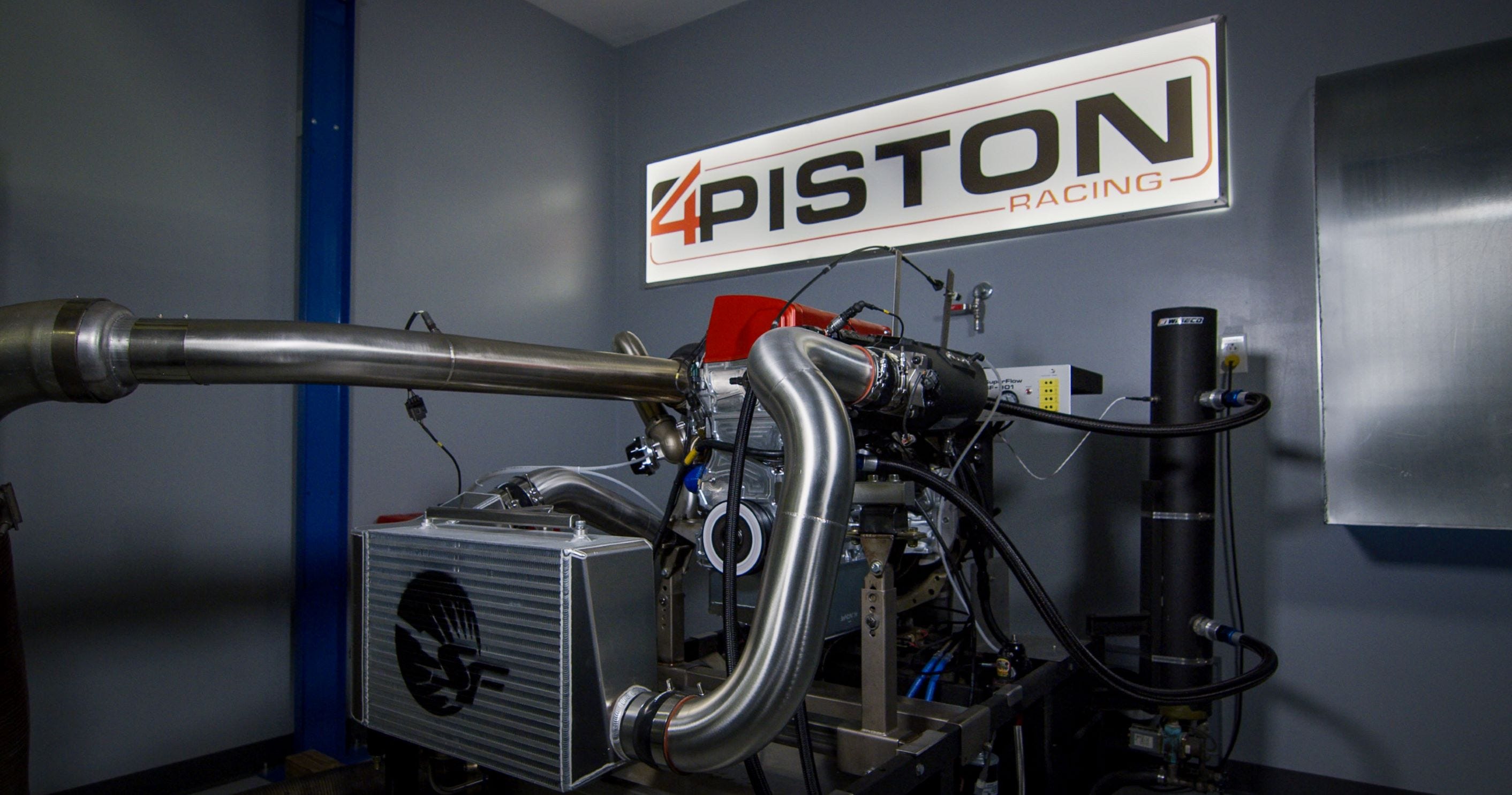
We follow along as 4 Piston Racing builds a streetable 1,000hp Honda K series and dyno tests the combination to prove it!
In today’s automotive world, 1,000hp still turns heads. Only a few short years ago, that sort of grunt was unheard of in a street car, and the absolute top-tier racing tech at the track. But 1,000 horsepower out of a 4 cylinder? That was the stuff of beer-soaked, bar banter. Oh, how the times have changed. 4 Piston Racing, the brainchild of Luke Wilson and Josh Klein, has been at the forefront of high-powered four-cylinder engines for over 20 years and through their copious technical expertise, 1,000hp is not only achievable, it’s the team’s everyday grind. Through years of research and development on and off the track, careful component selection, and expert assembly, the 4 Piston Racing team can churn out an over-the-counter, quadruple-digit horsepower, long-block, dubbed the KT1000.
“This is something we sell for road race, time attack, or general street use,” said Wilson. “It’ll cruise the streets easily, But, go to the track, turn [the boost] up and lay down 8-second passes. You can drive it like a normal car.”
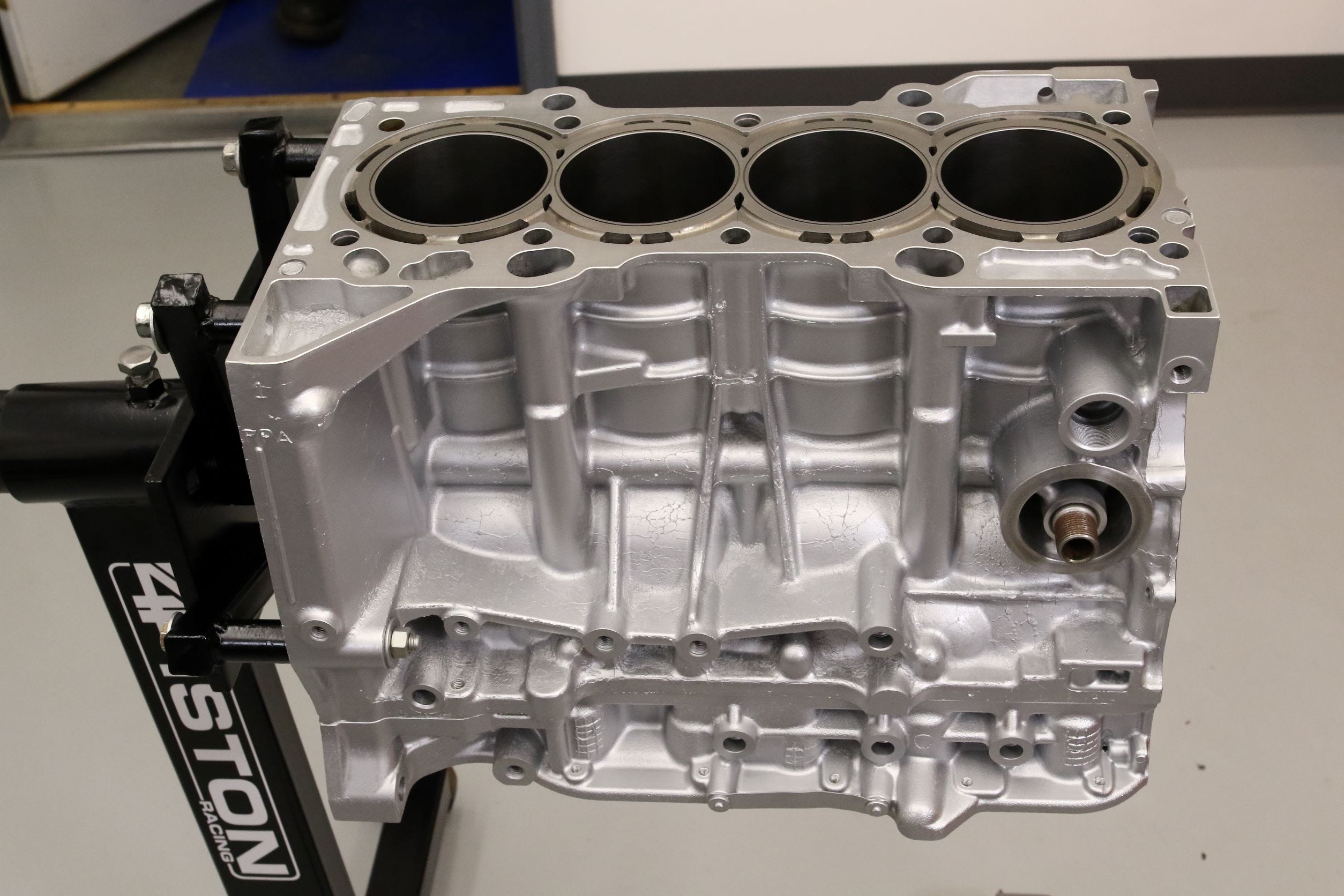
Stout Bottom End
Based on Honda K-series architecture, 4 Piston begins with a production K24A1 block from an Acura TSX. The block, although a factory casting, undergoes major surgery to prepare it for nearly a five-time boost in power. The engine is treated to full machining and the installation of ductile iron cylinder liners from Ramey Racing.
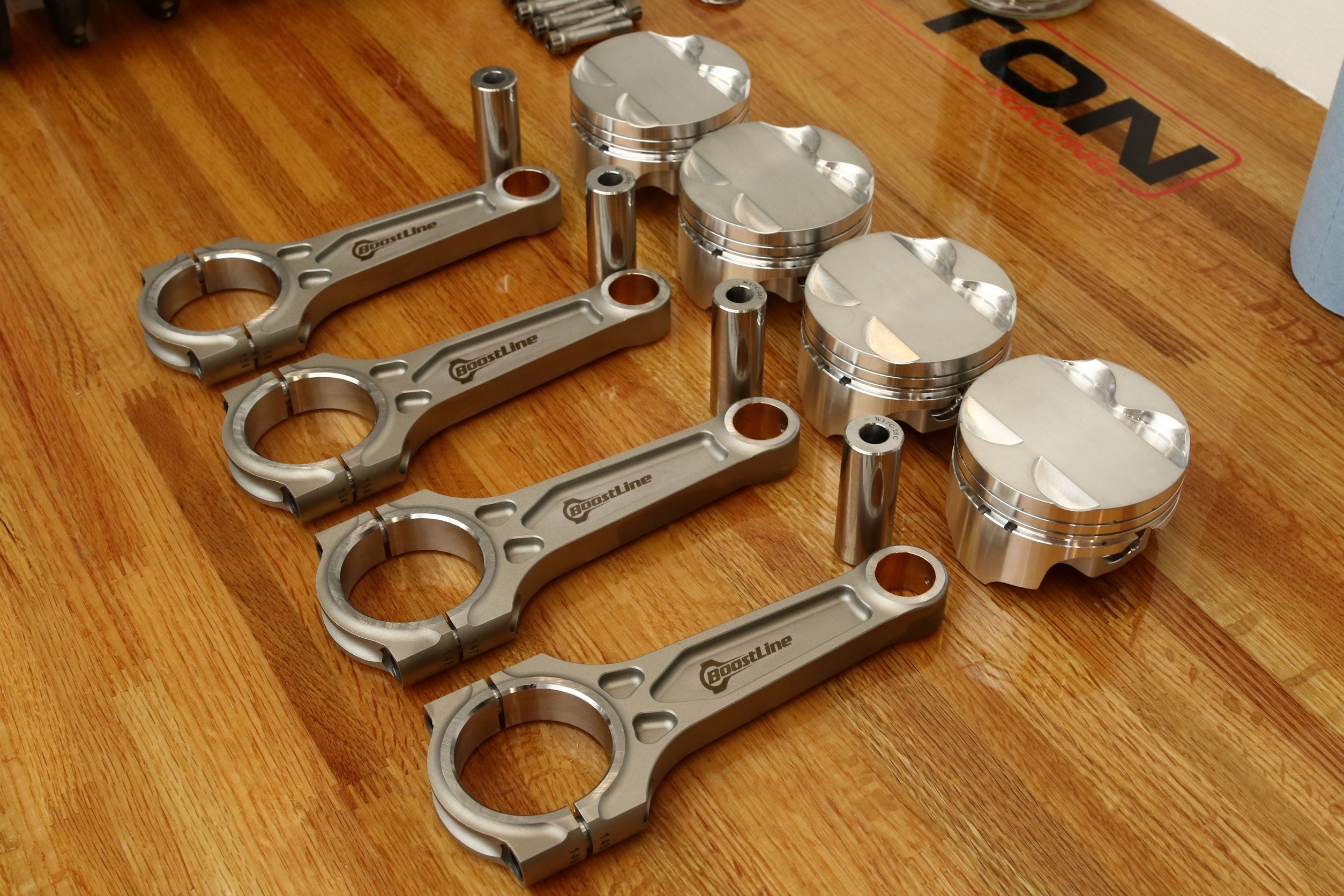
The bore is finished at 87.5mm and a groove is machined into the top of each cylinder for copper O-rings to contain the extreme cylinder pressure generated by over 250hp per cylinder! An OEM K series crankshaft is utilized, carrying 99mm of stroke for a final displacement of 2.4L. Wilson says the factory crank is an incredibly stout piece, and all that is needed is a thorough cleaning, precision balance job, and for it to be installed in the block with ACL race-series bearings. Providing oil to those bearings is a factory oil pump modified by 4Piston for added pressure.
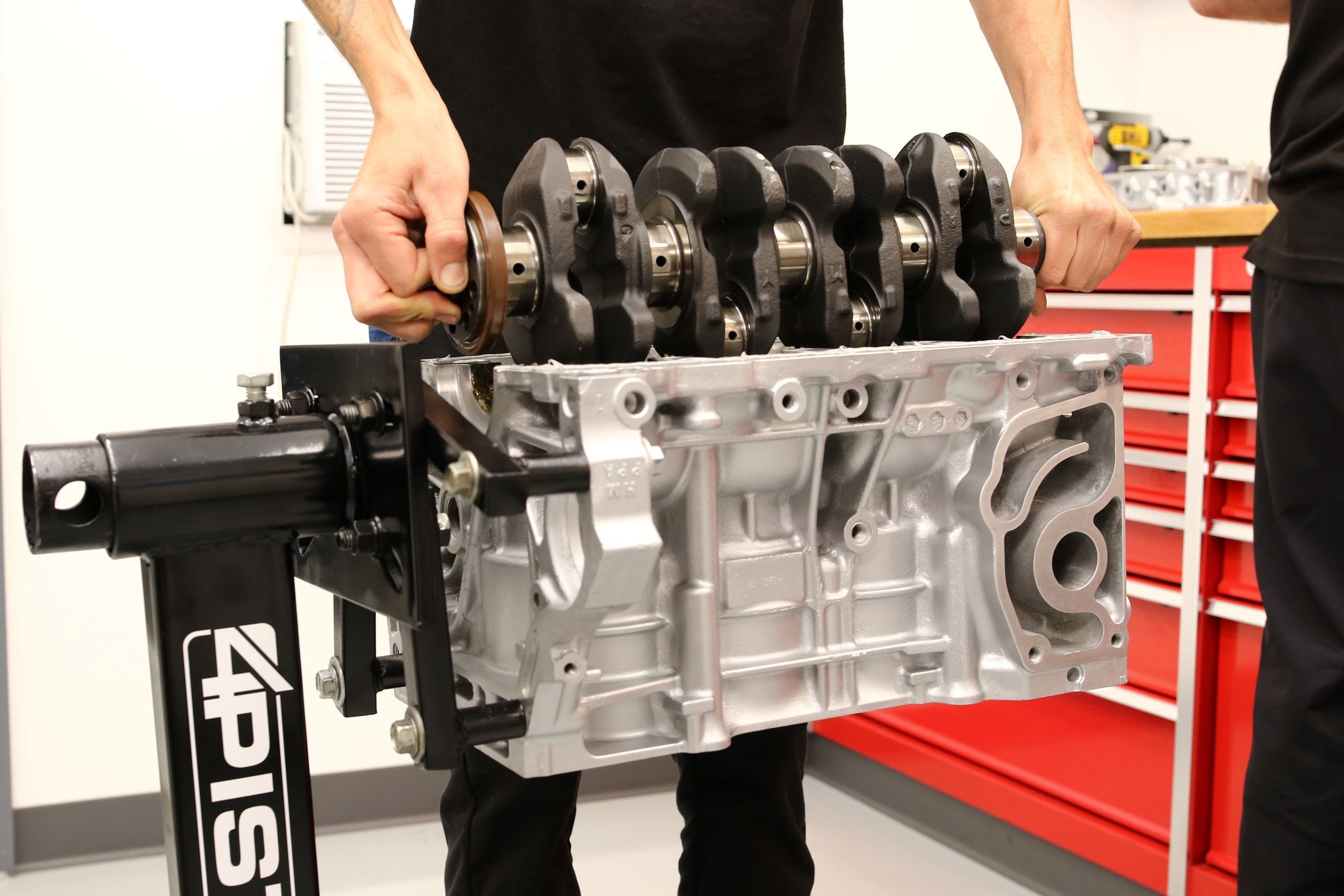
“These [pumps] start to cavitate at 9,000rpm, draw air, and lose pressure,” said Wilson. “Our pump is good till 10,000rpm.” Feeding that pump is a wet-sump Moroso oil pump. “That increases the oil volume and gets the pickup down deeper while also adding a baffle and windage tray,” said Wilson. “At the track, the oil tends to slosh around and uncover the pickup when the car accelerates or brakes, this helps prevent that.”
Moving upwards in the block is a set of extremely stout BoostLine forged steel rods, which Wilson says are imperative to a street engine. “We build a drag version of this engine with aluminum rods, but you aren’t driving those on the street.” “An aluminum rod can absorb some shock and tuning error, but for the street, you need a rod like a BoostLine.”
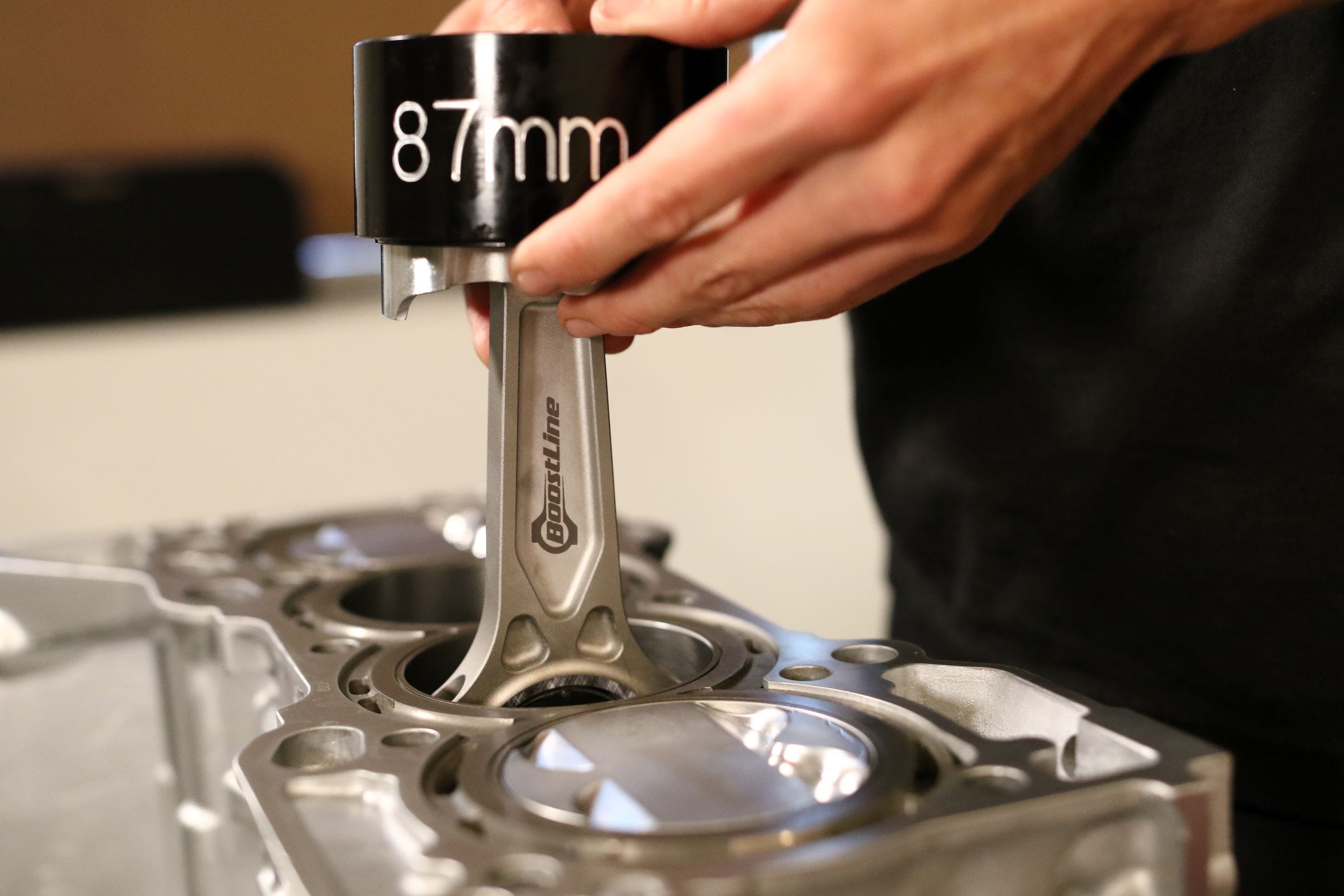
The rods, forged from 4340 steel, feature a patented three-pocket design, ARP 2000-series bolts (an ARP Custom Age 625 Plus rod bolt upgrade is available) and are designed for power adder applications with extreme cylinder pressure, such as the massive Precision 7285 turbo this engine will utilize.
Making 1,000hp requires an extremely well-engineered piston. Doing it in a 4-cylinder application, where each cylinder is expected to produce 250hp–49 more ponies than entire engine made in its factory configuration–takes that requirement to the next level.
To achieve that goal, 4 Piston uses a custom Wiseco piston designed specifically with boost and huge power in mind.
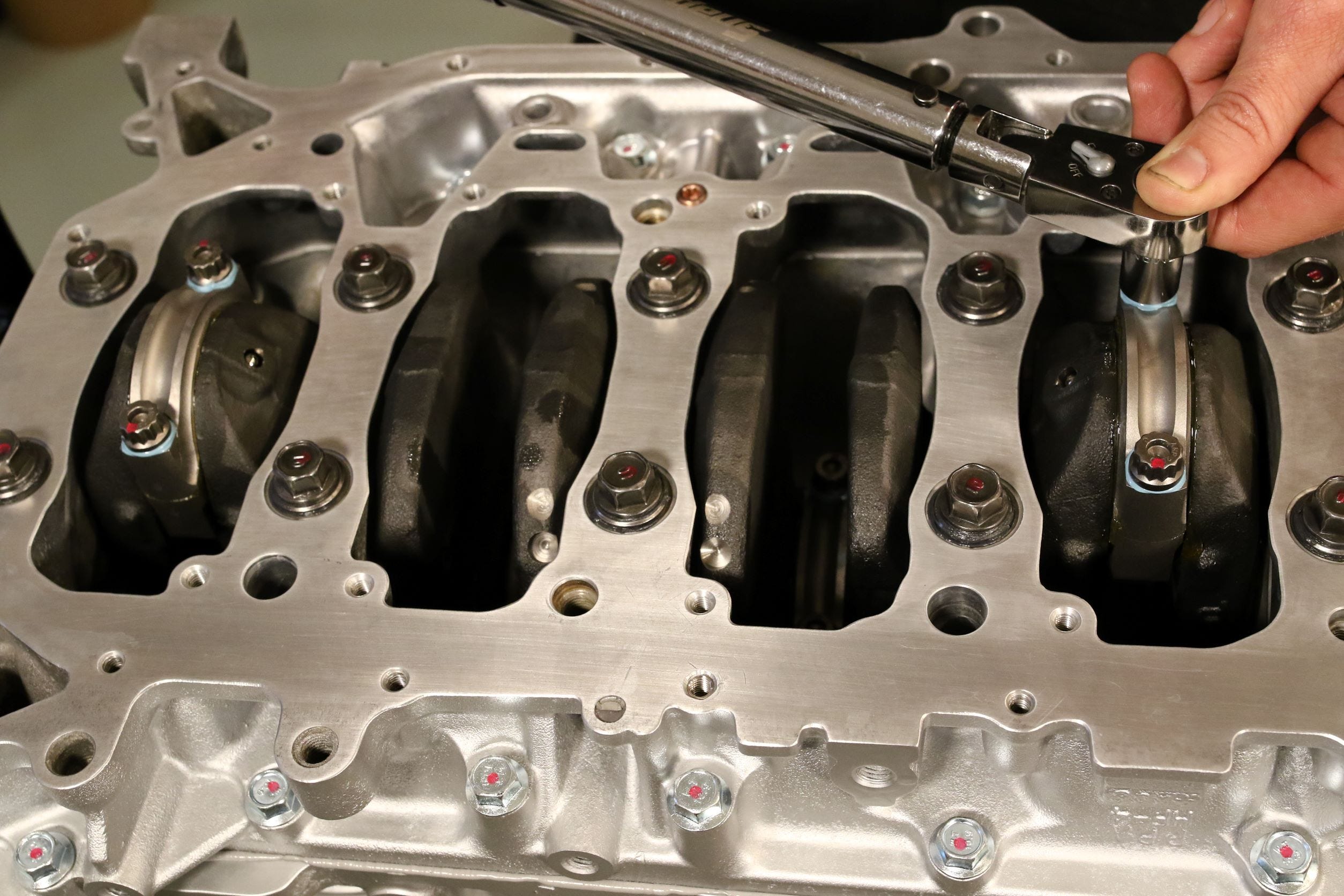
Boost generates a lot of heat and creating a piston to handle it, requires clever ways of evacuating that heat. One of the key ways to do that is by putting additional material in the right places. The crown of the piston, which is exposed to the brunt of the scorching combustion in an engine, is the first place that needs additional material added. Think of the piston crown like a piece of meat on the BBQ. A thick, ribeye steak is obviously going to take more time to cook than a hamburger. This thermal capacity, the amount of heat the piston can absorb before it begins to anneal, or soften, is dictated by the thickness of aluminum used.
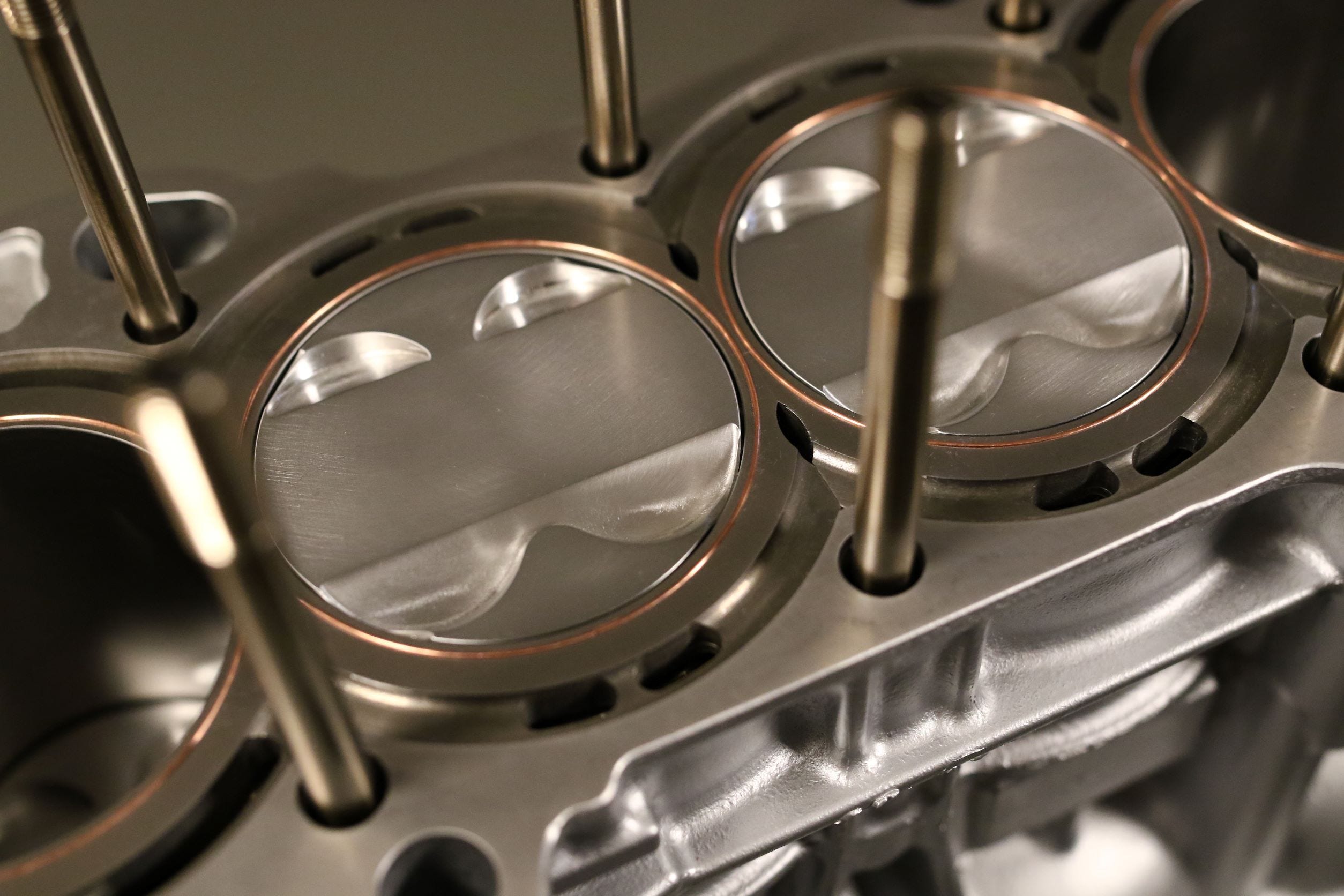
In much the same way, softening or collapse of the ring lands is another very real concern in such a power dense engine. To combat this, Wiseco used a .300in-thick ring land to insure adequate distance from combustion heat and the top ring. Additional material is also added to the skirt, and wrist pin bosses to ensure the engine can sustain high load for long durations.
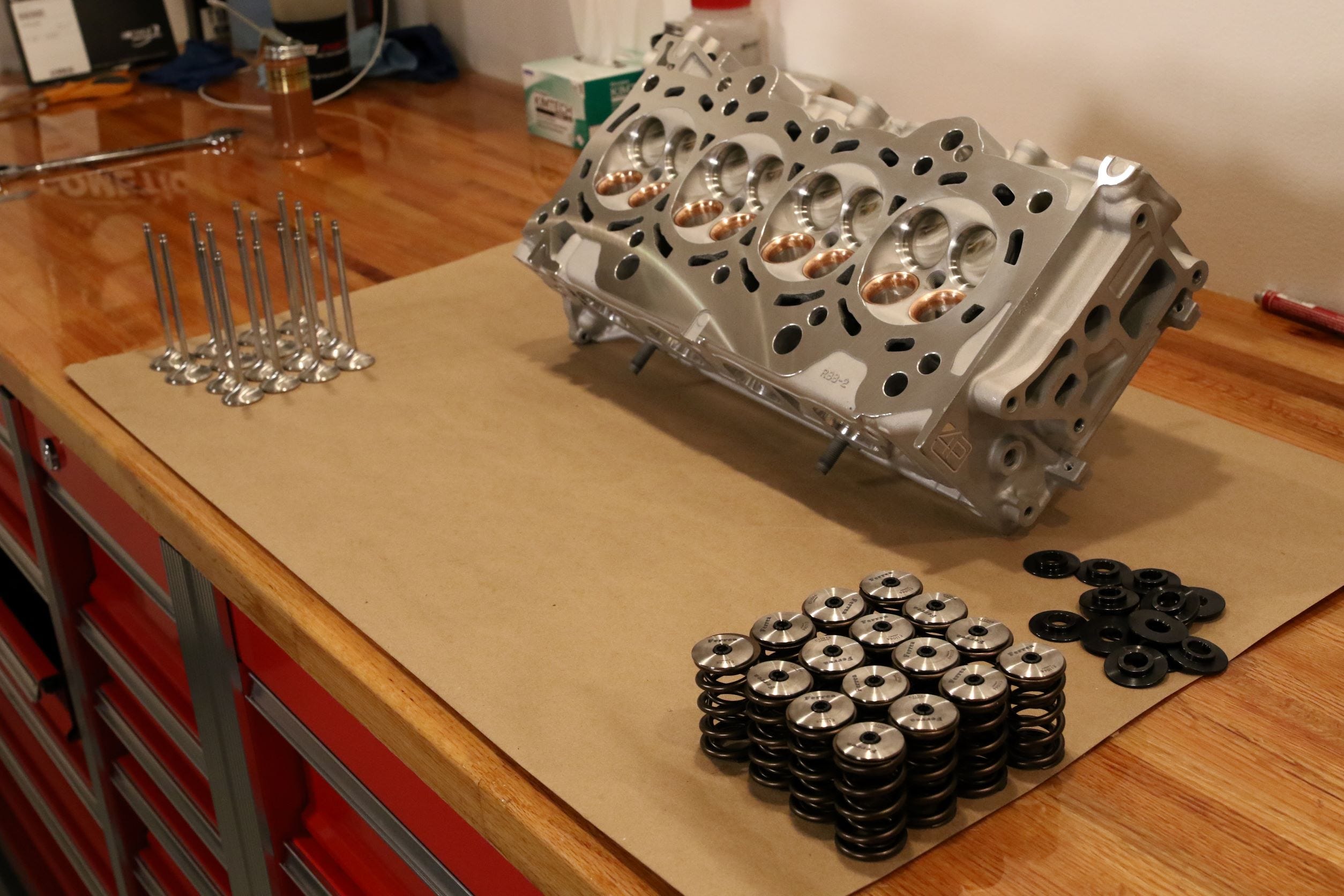
What’s Up Top?
Having a bottom end that can take the power is a moot point if the top end can’t make it. So, to move 1,000hp worth of air, the team at 4 Piston utilizes one of their Pro TSX cylinder heads which are CNC’d in-house. The head, based on a production Acura unit features a small-volume port (compared to an all-out naturally aspirated engine) to up air speed while still flowing a massive 340cfm.
“The K series engines are really efficient,” said Wilson. “It’s already a 320cfm head from the factory. The smaller port allows it to maintain boost pressure at higher RPM without falling off. We’re trying to keep it responsive so when you make gear changes you’re still in the meat of the powerband.”
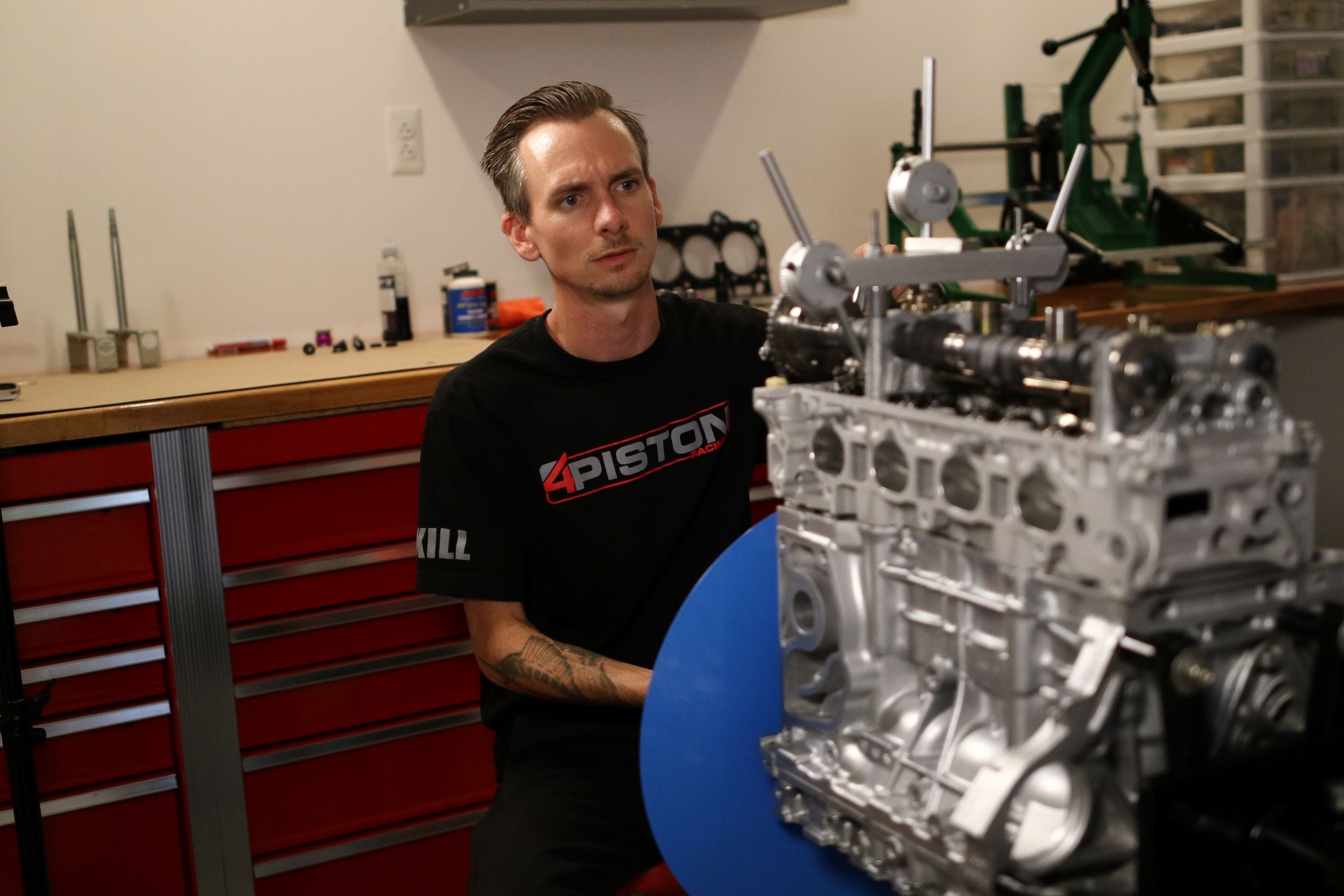
Working the Ferrea Super Alloy, high-temp 35mm intake and 30mm exhaust valves in the 4 Piston cylinder head is a Billet 4 Piston turbo camshaft with .545in/.511in lift on the intake and exhaust respectively. Both use Ferrea, lightweight titanium retainers, and CHE high temp valve guides help keep the valves square in the seat under the extreme temperatures the boosted engine will see in use. In typical innovative fashion, the 4 Piston team found a way to use the variable cam timing of the K series (i-VTEC) system to their advantage to help the engine idle smooth, spool the turbo, and maximize top-end power.
“We fix the exhaust cam, but leave the intake cam variable,” said Wilson. “It can idle like stock. Sit at a stop light, idle in traffic, and as soon as you get into the turbo it gets into the big cam.
We can swing the centerline from 135º to about 103º, which helps to spool the turbo up, then will pull it back to 111 at high rpm. “[This engine] is also variable lift. We don’t do that on the race engines, but since this is something you can run around on the street, we keep it.”
The secret to the four-digit sauce is the addition of a Precision 7285 turbocharger. While smaller than the snails 4 Piston typically uses on all-out race engines, it still provides plenty of steam to crack the 1,000hp barrier. “The turbo will throw 60psi at the engine if I let it,” said Wilson. “This turbo keeps carrying power and doesn’t nose over. It’s really fun.”
Supplying pressurized exhaust to the turbo is a Speed Factory turbo manifold and boost pressure is regulated by a Turbosmart 60mm wastegate. On the opposite side of the turbo, a Skunk2 plenum intake with a 90mm throttle body delivers pressurized air while 8, Injector Dynamics 2,000cc injectors (two per cylinder) provide fuel.

On the Dyno
Once on the dyno, the engine quickly fired and a break-in cycle was initiated. It didn’t take long before the 4 Piston team had the K up against the dyno brake and making boost.
“In a car, boost comes up pretty gradually,” said Wilson. “Boost builds as the engine climbs in rpm. On the dyno, we have to have the brake setup to hold basically big block torque.”
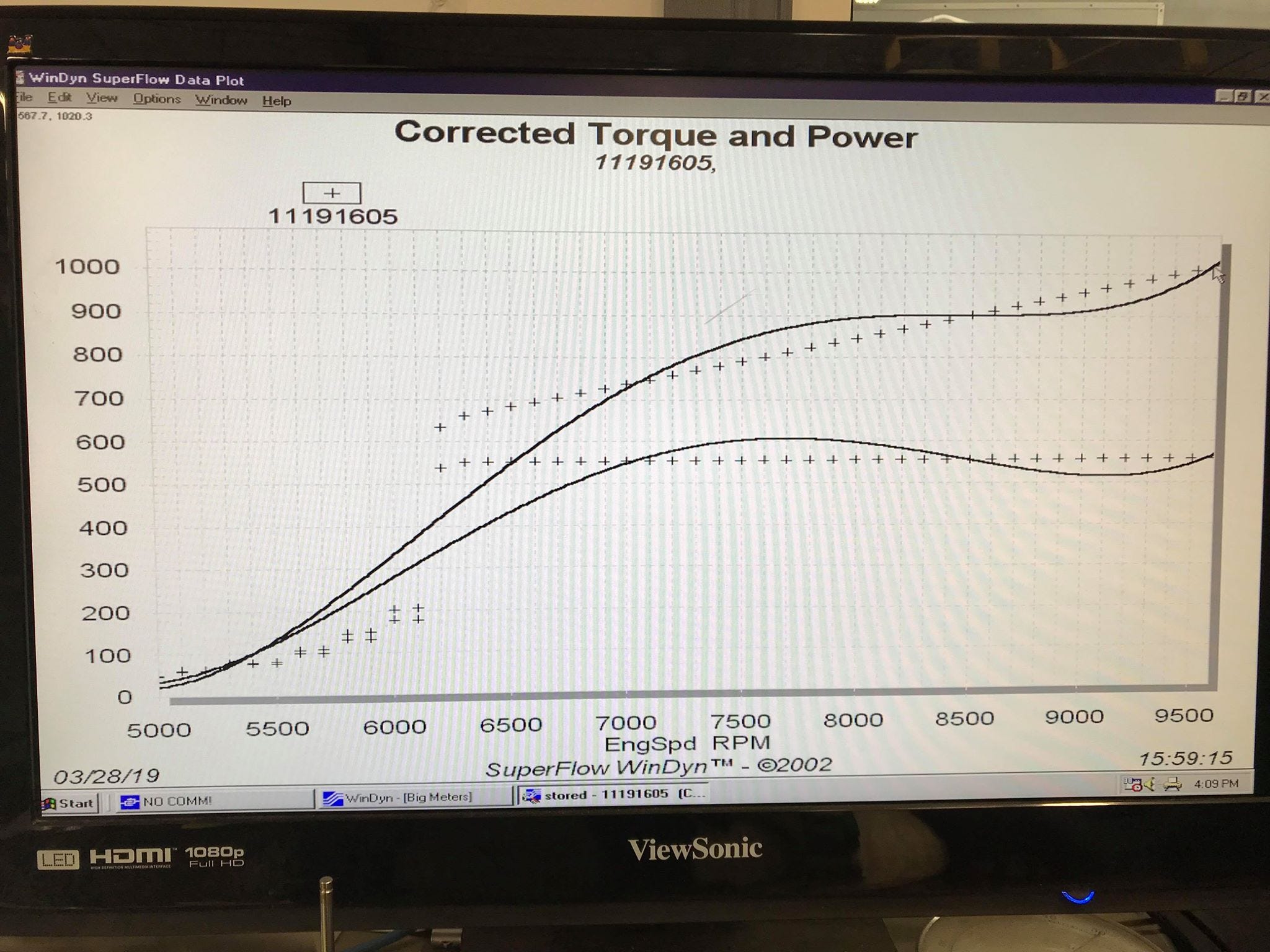
And big-block torque is indeed what the K series delivered, pumping out over 500 lb-ft through nearly the entire pull, with torque peaking at 558.9 lb-ft. Horsepower came on hard once the turbo spooled and the engine pulled all the way up to its sky-high 9,800rpm redline, peaking at 1,042 at 9,800rpm and 33psi of boost. The engine cracked the 1,000hp barrier at 9,500 rpm and would have happily kept pulling if the dyno operator did know better. “It cracked 1,000hp at only 33psi,” said Wilson. “We’re at full boost at about 6,000 rpm. We can make it come in earlier, but there’s no reason because there’s no traction.”
Real World Applications
The craziest aspect of this engine isn’t the power, the torque, or the sheer wow factor of 250hp per cylinder. It’s the fact that this is a completely streetable engine, that people can buy, install in a car, and rack up miles on.
“They make a lot of power really, really early,” said Wilson. “I have a customer [with this long block] that dyno’d 1,100hp and drives the car 100mi to work. We built the engine to hold 1,200.”
Is a 1,000hp front-wheel drive car overkill? Absolutely, but therein lies the beauty of boost control. The engine can be dialed in for a fun street car, back up for the track, or really, whatever the driver wants based on his or her level of sanity.
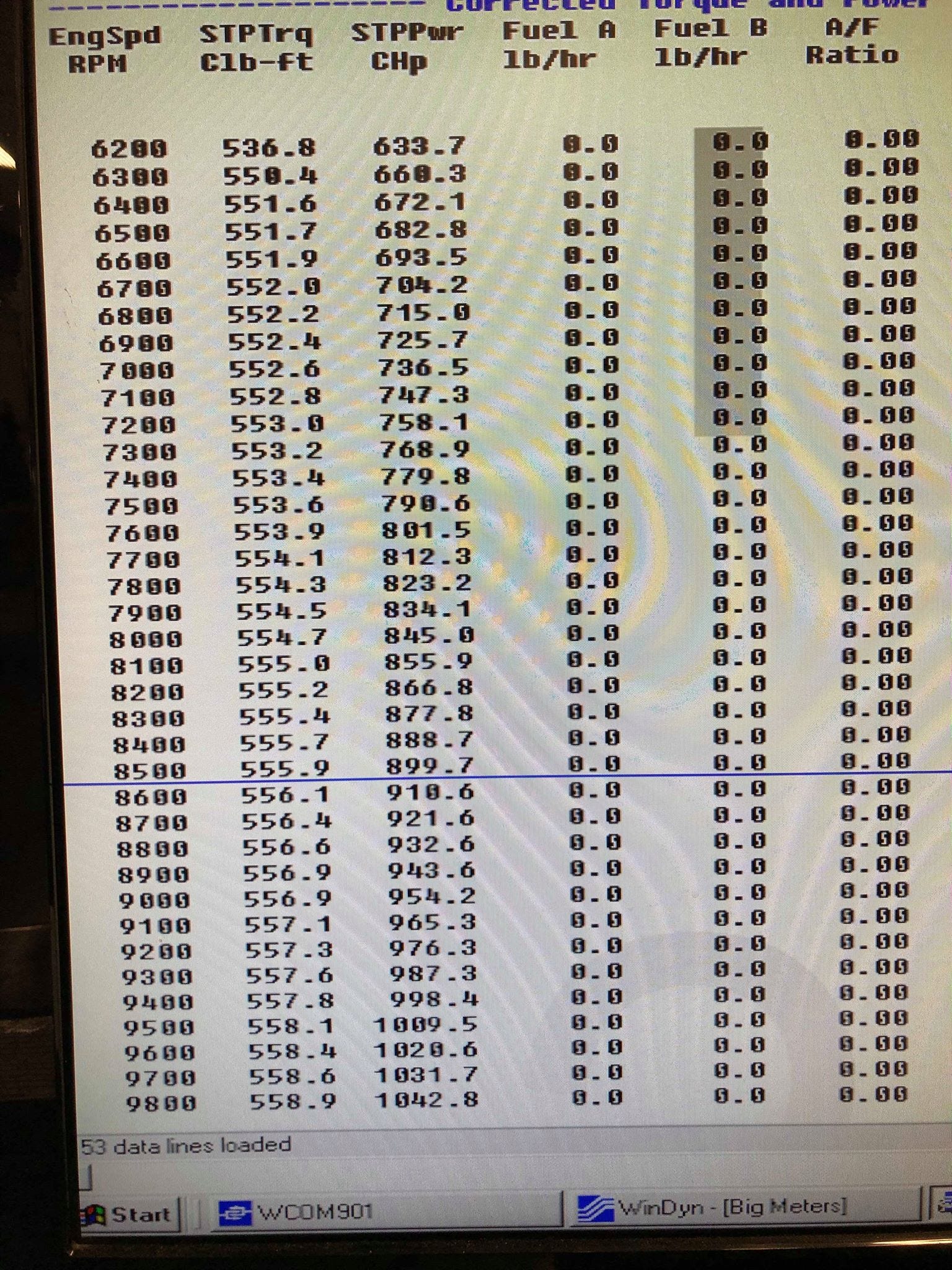
The 4 Piston recipe for streetable, quadruple digit power is a solid, and time tested one. It calls for the perfect ingredients, a seasoned hand, and some pro-level tuning, but it can be done. While the price is a bit much for many of us penny-pinching car folk, when you factor in the hardware, the math checks out. The long-block in this build retails for $9,925. However, if you want one, you’ll have to wait in line. “We’re back logged a lot,” laughs Wilson. “These turbo engines are being raced in everything right now!”
When 4-cylinder engines reliably and routinely break the 1,000hp barrier, it can only mean one thing: It’s a good time to be a gearhead.